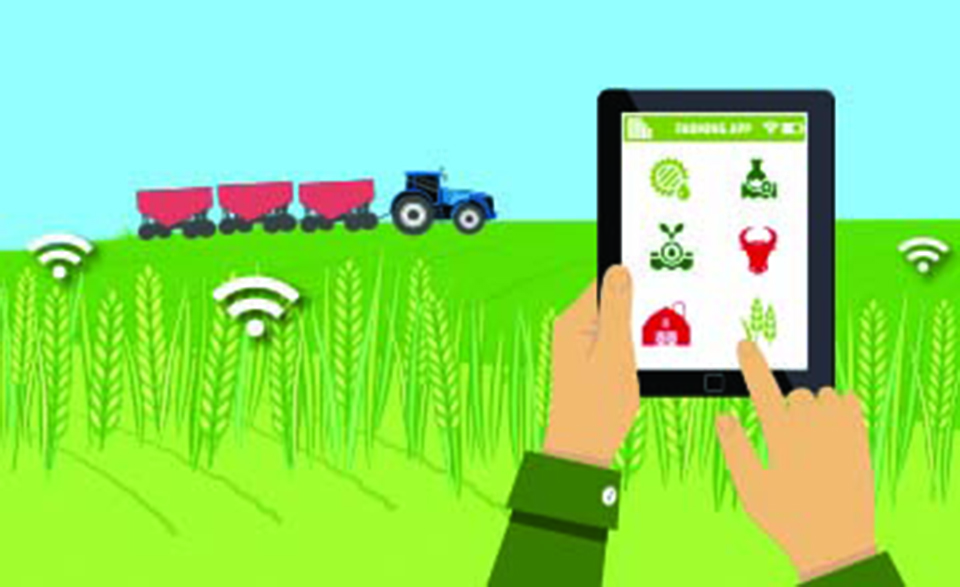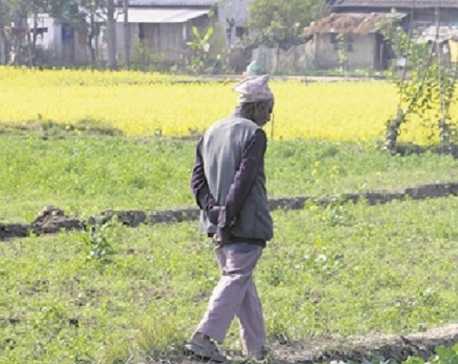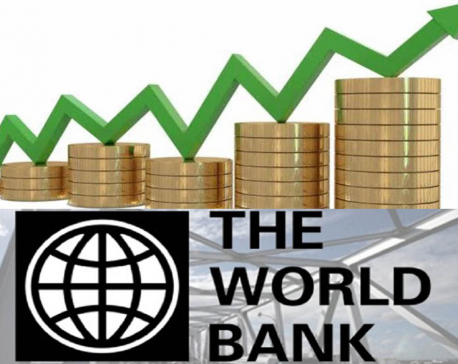
OR

If we are to make smart agriculture program successful, we first need to make our agriculture institutions smart
The Government of Province 5 has proposed ‘Smart Agriculture Village Program’ for all its 12 districts and allocated 360 million rupees for its implementation. The program is going to be launched from this fiscal year with a noble objective of increasing farmers’ income through commercialization of agriculture. As per the program, activities to be implemented in smart agriculture villages should be climate smart, irrigation smart, nutrition smart, technology smart and market smart. But were the planners of this program clear about the concept of smart agriculture at the time of formulating this program? What are the sources of smart technologies? Are the available irrigation and market facilities smart? Although there is no universally accepted definition of smart agriculture, we need to be clear about the concept before starting such program. Well defined criteria need to be developed to select the villages and crops and commodities for the purposes. Otherwise this program might also fail just like ‘Smart City’ agenda.
Know the concept
Different persons in different countries have defined smart agriculture as per their suitability. In the Nepali context, smart agriculture can be defined as a process of performing agricultural activities using advanced technologies. Use of biotechnological tools in agriculture, protected cultivation, use of modern irrigation methods, farm mechanization and introduction of field-sensing systems to monitor the environmental stresses and crop conditions, and improvement of plant traits against environmental stresses and diseases are some of the examples of advanced technologies that can be used in Nepal.
Agriculture needs technology infusion to accelerate the production so that food is accessible to all people as per the constitutional right. Smart agriculture also uses modern information and communication technologies to increase operational efficiency.
Smart agriculture in the developed countries includes agricultural practices with the adoption of internet of thing (IoT), sensors and others, in order to increase productivity of the farm. The advanced technologies they used are segmented on the basis of type, software, service, solution, and application, devices, sensor monitoring systems, and smart detection systems. Based on the services, they are segmented into consulting, integration, implementation and maintenance. On the basis of solutions, they are classified into mobility solution, supply chain management solution, remote monitoring solution, quality assurance solution, connectivity solution, and data analytics solution. On the basis of hardware, the global smart agriculture is segmented into global positioning system (GPS). In terms of different applications, it is classified into precision farming, livestock monitoring, fish farming, smart greenhouse and others.
Smart agriculture is an innovative way of carrying out farming activities by reducing human efforts and by making maximum utilization of the available resources. The application and feasibility of smart agricultural devices depend upon the economic condition and size of the agricultural land. Advanced technological products that are used in the smart agriculture have a wide range of applications which not only include yield monitoring, field mapping, crop scouting but also irrigation management, milk harvesting and many others. It also addresses the interlinked challenges of food security and climate change, and benefit smallholder farmers by increasing efficiency of inputs such as labor, seeds and fertilizers. By protecting ecosystems and landscapes, smart agriculture practices help protect natural resources for future generations.
Smart agriculture is also a cost-efficient approach for sustainable agriculture which aims to increase growth of productivity in the changing climate with the use of advanced technology. Smart agriculture tools are mostly used in precision farming as they play an important role in improving farm efficiency and help the farmers in increasing the crop yields.
Do the basics
Before introducing a smart agriculture system to any new area, a feasibility survey needs to be conducted including important parameters like available technologies, inputs, human resources, cost involved and market situations. The drivers of agricultural transformation from traditional to smart are multidimensional, interrelated, and change over time. First of all, we need to make existing government institutions smart. In agriculture, the most important government institutions that first need to be made smart are the Department of Agriculture (DOA) and Nepal Agriculture Research Council (NARC). Change agents whom farmers trust and interact regularly are under DOA. NARC is responsible for generating technologies. At the movement DOA has been dismantled in the name of federalization and NARC is facing brain drain problem. Similarly, the areas selected for the smart agriculture should have road and electricity connectivity, and irrigation facilities. But most of the production areas in Nepal are lacking connectivity and irrigation
Show the will
One of the important factors in the software side is the willingness of the government, development partners, farmers, companies, and civil society organizations to take risks and change behaviors to pursue a better outcome. The willingness and commitments of the government should be reflected in budget allocation and program planning. Other key stakeholders should also make a big effort to ensure and maintain the change. From planning to implementation, key government organizations, development partners and the private sector must be aligned. Such alignment must also be extended from the central level to provinces and local level. Laws and regulations that influence banking, labor, infrastructure, land consolidation, access to water, telecommunications, taxes, and insurance are also critical considerations. The other key factors are appropriate metrics and incentives, sufficient training, and performance management of the change agents, value chains and cross-cutting enablers. The last but the most important factor is the investment. Agricultural transformation will be successful only when there is public investment that complements with the private-sector investment.
The concept of Sixth Industrialization—convergence of agriculture, manufacturing and services—could be one of the models of smart agriculture in Nepal. Nepal has tremendous traditional knowledge and technology related to agriculture. The promotion of Sixth Industrialization will not only help to protect our traditional knowledge and technology but also will make our agriculture smart. It encourages the utilization of locally available natural resources, traditional technologies, people’s talents, and incorporation of history and culture. More importantly, it is a modern value chain led by farmers rather than off-farm actors as is happening currently. But the government should be proactive in policy formulation, investment and implementation of the programs.
bhairabr@gmail.com
You May Like This

The Nepal we need in post-COVID-19
The coronavirus pandemic is forcing Nepalis to rethink the path of development. We are entering a new reality of frequent... Read More...

Farm equipment worth Rs 46.8 million distributed
BANEPA, July 23: The Province 3 government distributed 19 types of equipment to farmers at subsidized rates through Agriculture Knowledge Center,... Read More...

Complete education, full health could double Nepal's GDP per capita: WB
KATHMANDU, June 7: Nepal has the potential to double its Gross Domestic Product (GDP) per capita in the long run if... Read More...







Just In
- NRB to provide collateral-free loans to foreign employment seekers
- NEB to publish Grade 12 results next week
- Body handover begins; Relatives remain dissatisfied with insurance, compensation amount
- NC defers its plan to join Koshi govt
- NRB to review microfinance loan interest rate
- 134 dead in floods and landslides since onset of monsoon this year
- Mahakali Irrigation Project sees only 22 percent physical progress in 18 years
- Singapore now holds world's most powerful passport; Nepal stays at 98th












Leave A Comment